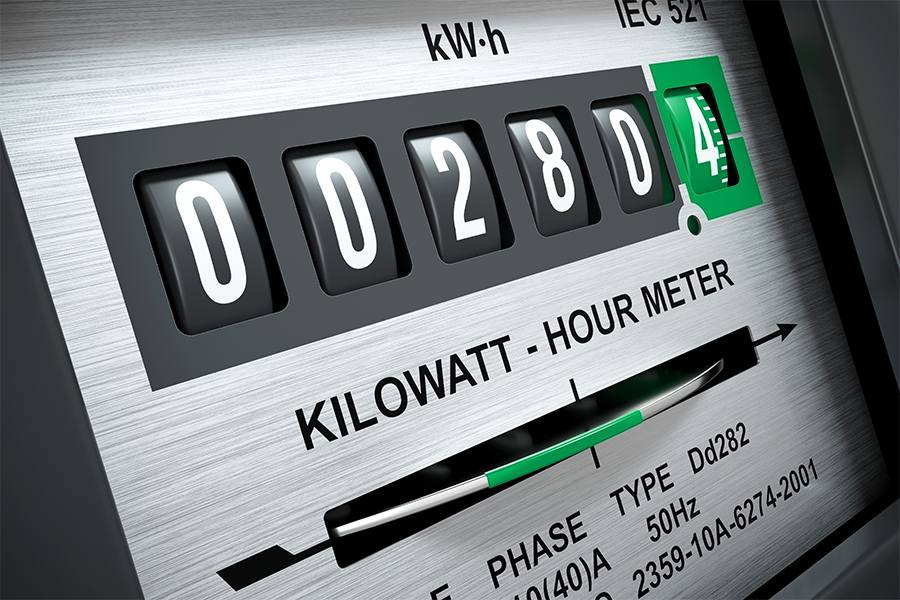Solar power. Solar Energy. What's the difference?
Well, if you just mean to generally refer to whatever it is that solar panels produce when they get hit by sunlight, then there's no reason to get fussy.
Scientifically speaking, however, power and energy stand for two very different but nonetheless intimately related concepts.
Moreover, in order to fully evaluate a proposed solar system for your home or business, you need to have a basic understanding of both and how they differ.
Different measurements: kW for power vs. kWh for energy
Just as distance can be measured in either miles or kilometers, there are various different but equally good ways to measure both power and energy.
Electrical power is usually measured in kilowatts, abbreviated as kW.
Whereas electrical energy is typically measured in kilowatt-hours, abbreviated as kWh.
Though power and energy are different concepts, they're still related to each other.
The amount of power (kW) a system produces at any given time equals the amount of energy (kWh) it would produce in an hour.
Like most things, however, the distinction can be a little tough to grasp in the abstract. So let's use an analogy to make it more concrete.
The speed vs. distance analogy
It’s helpful to think of power (kW) as analogous to the speed at which a car is moving.
Energy (kWh), on the other hand, is analogous to the distance it actually moves over some specified period of time.
Just as power (kW) is the amount of energy (kWh) that would be generated in an hour, speed (miles per hour) is the amount of distance that would be traveled in an hour
Notice that power and speed are both what scientists call "instantaneous measurements." Both the power (kW) generated by a solar panel and the speed at which your car is moving are measurements that can only be taken at one moment in time.
Whereas both energy (kWh) and distance are measurements taken over an interval of time rather than at a single instant.
So, just as we can ask, how much distance your car was driven last month, we can ask how much energy (kWh) it took to run your home last month.
But it makes no sense to ask what the speed of your car was last month—at different times it will have been traveling at different speeds, ranging from zero when it was at rest to whatever maximum speed you wound up driving for the month.
And, similarly, once we rigorously distinguish between power and energy, it makes no sense to ask how much power (kW) your home used last month because power, like speed, can only be measured instantaneously at a single moment.
Understanding Your Solar System Proposal: Energy
When looking at a solar system proposal for your home, you’ll see figures for both power and energy.
For example, the system you’re considering might deliver 8.5 kW of power and provide an estimated 1000 kWh of energy each month.
You can compare the monthly energy (kWh) estimate to how many kWh of electricity your utility company bills you for on average each month. Factoring in what they charge per kWh versus the cost of your solar system allows you to determine how much money going solar will save you.
Understanding Your Solar System Proposal: Power
The power (kW) your system will deliver actually varies from moment to moment, depending on how much sun is shining on your panels. The number of kW provided in your proposal will be the maximum power that would be generated if the sun were optimally positioned on each panel.
Determining your system's power capacity is a fairly simple matter.
All you have to do is multiply the number of panels by the amount of power each will produce under optimal circumstances. And the latter is provided by the manufacturer in watts, where each kilowatt equals 1000 watts.
So, for example, if you have 20 solar panels and each is rated 300 Watts, the size of your system will be 20 x 300 watts = 6000 watts = 6 kW of power.
Estimating energy
Figuring out the amount of energy (kWh) your solar system will generate annually is—on the other hand—an extremely complicated process since each of the following must be factored in:
The slope of your roof surfaces
The directions they face
Year-round local weather conditions
Any tree or other objects that will wind up obstructing the sun's light at any time of the day throughout the year
But that’s pretty much all there is to understanding the power (kW) and energy (kWh) estimates you’ll find in a solar system proposal for your home.
Using satellite imagery of your roof and state-of-the-art software, our trained analysts can design a solar system for your home from their desks.
We can also tell you exactly how much money you’d be saving on your monthly energy bill and, hence, how good an investment going solar will turn out to be for you.
